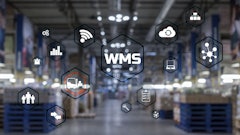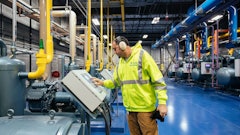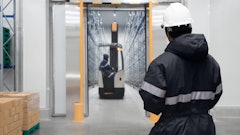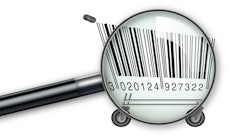
People love food! Grocery distribution centers service retail stores and online customers, but as home delivery and store pick-up demands increase, the importance of store fulfillment continues to grow. An expanding strategy for accomplishing store fulfillment is the use of micro-fulfillment centers (MFCs), which fulfill consumer orders from the store with an automated system. Grocery stores are strategically positioned in populated areas to service local communities, so it makes sense to utilize these locations to service regional consumer online demand. With this growth, automated warehouse operations have started to move into the local grocery store to fulfill the demand.
You can see this in-store growth by the number of grocery employees walking the store aisles with special carts shopping for the consumer (in-store fulfillment). You can see this growth with the number of parking spaces allocated for store pick-up. This strategy is one of the lowest cost methods for providing online fulfillment from the grocery store. But, as online demand continues to grow, the in-store fulfillment strategy using employee shoppers may struggle to keep up and potentially crowd the everyday shopper. There needs to be a faster approach to fulfilling these consumer orders that removes shopper congestion from the store.
The alternatives include dark-store fulfillment (stores closed to the public and converted to fulfillment centers) and/or dedicated MFCs attached to or near existing stores. There are hundreds of dedicated MFCs today, however multiple studies suggest that by 2030, there will be thousands.
At the start of the micro-fulfillment movement, existing stores leveraged their available space (in-store and dark-store fulfillment) or with store expansions for a dedicated MFC. In addition, grocery retailers are looking to maintain pace with competitors by investing in automation in an attempt to reduce footprint and labor requirements while increasing the accuracy and speed of delivery. The growth of the automation marketplace is supporting grocers with their micro-fulfillment expansion plans.
There are many material handling equipment (MHE) manufacturing companies that develop technology specific for the micro-fulfillment space. Additionally, most of the common distribution center MHE firms manufacture automation, such shuttles, tailored specifically for micro-fulfillment operations.
The challenge for grocery retailers is deciding which site, application, and supplier are the best fit to satisfy their demand. The micro-fulfillment site is determined by the availability of store expansion and/or the ability to close stores. The space or footprint required depends on the number of products, product types, consumer demand, storage height (building height) restrictions and the technology utilized. One of the primary technologies utilized in micro-fulfillment is shuttle technology, which doesn’t require high building clear heights. These systems can be installed in typical store clear heights (i.e. 12-20 feet). If constructing an expansion building for fulfillment operations, automated systems can be much taller, but building construction codes may restrict height options.
Developing a master plan is helpful when making these tough design decisions. The planning process involves collecting product and sales data to estimate the future online demand by store/region. These demand profiles define the product mix, amount of inventory, consumer order profiles, and transaction volumes. With demand profiles established, the space, equipment/technology, labor and investments alternatives are evaluated to identify the best technology concept, layout, and building size/shape. Evaluating multiple MFC technology options/designs drives the team to a working concept that can be justified and compared to a baseline (lowest cost approach to support the growth projections). The comparable baseline is likely fulfillment from a regional distribution center or manually picking orders within the store.
Once a solid business plan is accepted, the next step is to document the requirements and functional specifications within a well-documented request for proposal (RFP). This RFP is used to solicit proposed designs provided by technology suppliers that can satisfy the requirements. These bid responses are based on using the supplier’s technology and include design details, pricing, lead times, and transition plans.
With all bids in hand, a well-informed decision can be made to select a supplier to execute the MFC plan. With partners identified, the journey begins with the supplier developing engineering design documents, creating control interfaces, and the eventual construction/implementation of the MFC.
The growth of consumers staying at home and buying food/merchandise online is not slowing down. Luckily, grocers have a wide range of technology and suppliers to move forward developing micro-fulfillment operations to satisfy the demand. Many details remain, including the master planning, technology/functional specifications/RFP and selection of the best design and supplier for an application. Take the time required to make an informed decision on how to start and expand a micro-fulfilment strategy.

























